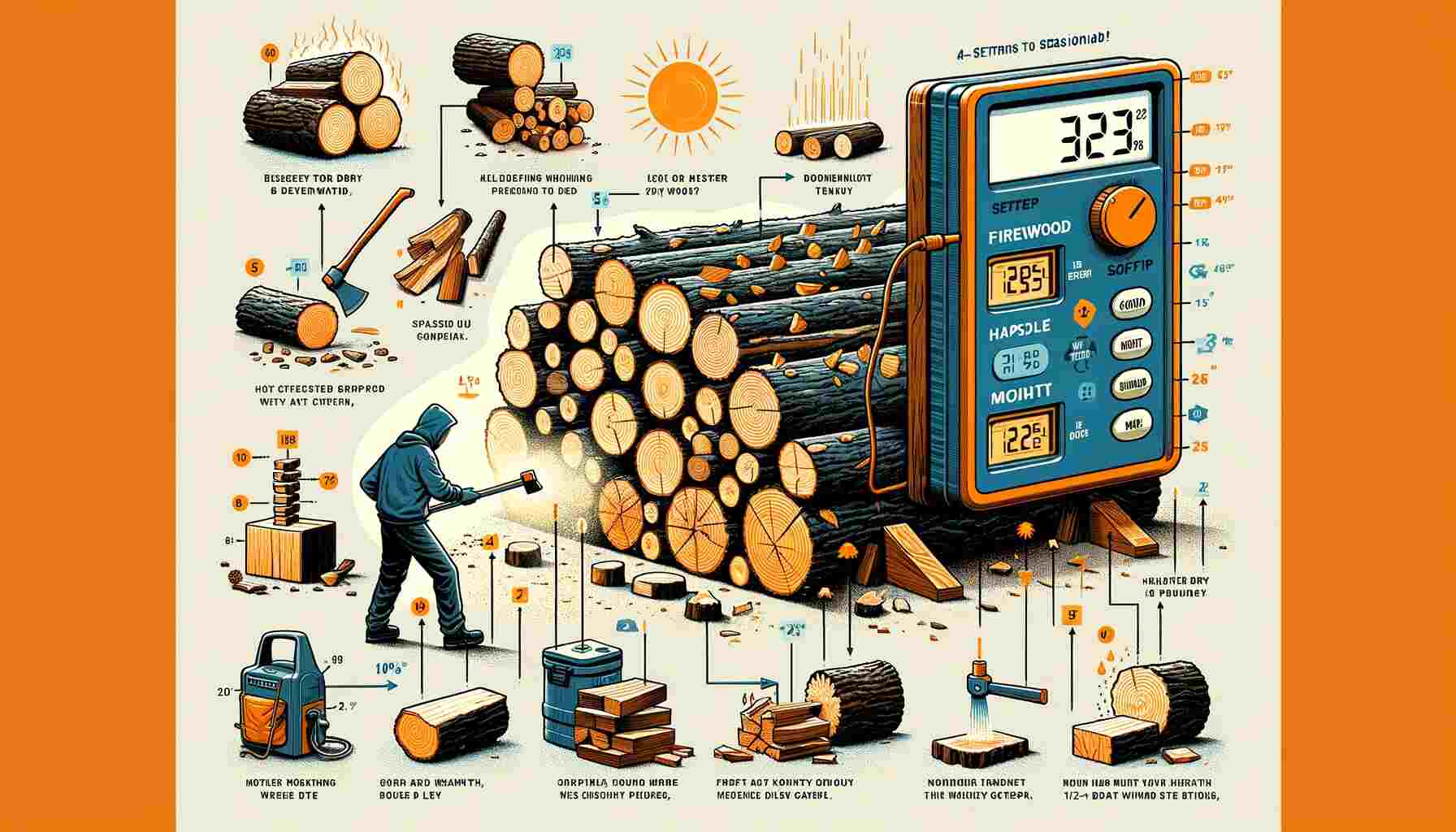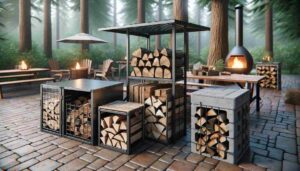Firewood is a vital resource for many homeowners, especially those who rely on wood-burning stoves or fireplaces to keep their homes warm during the cold months. However, freshly cut or green wood contains a significant amount of moisture, making it inefficient and challenging to burn. To enjoy a cozy and warm fire, it’s essential to know how to dry firewood quickly and effectively.
That’s why in this article, we will explore various methods and techniques we used to help you season your firewood efficiently.
Understanding the Importance of Dry Firewood
Before delving into the methods for drying firewood, it’s crucial to understand why it’s essential to have properly seasoned wood:
- Enhanced Efficiency: Dry firewood burns more efficiently than green wood. When you burn dry firewood, the heat generated is focused on warming your home rather than evaporating moisture from the wood.
- Reduced Creosote Buildup: Burning wet wood can lead to the accumulation of creosote in your chimney, which is highly flammable and poses a fire hazard. Dry wood produces less creosote, improving safety.
- Cost Savings: By drying your firewood quickly, you’ll save money on heating costs. Dry wood provides more heat per unit of volume compared to green wood.

How to Dry Firewood Quickly Step by Step
1. Choosing the Right Wood
Not all types of wood are created equal when it comes to firewood. Some species are more suitable for burning, while others may take longer to dry. Here are some tips for selecting the right wood:
- Hardwood vs. Softwood: Hardwood, such as oak, maple, and hickory, tends to burn longer and hotter than softwood like pine and spruce. However, softwood can be easier to split and may dry faster.
- Moisture Content: Ideally, you want your firewood to have a moisture content of around 20%. You can use a moisture meter to measure the moisture content of your wood. Wood with higher moisture content will take longer to dry.
- Age of Wood: Older trees tend to have lower moisture content. If you have the option, consider using wood from older trees for your firewood.
3. Cutting and Splitting Firewood
Properly preparing your firewood before the drying process is essential. Here’s how to do it:
- Cutting: Cut your wood into suitable lengths, typically around 16 to 18 inches. This size is ideal for most fireplaces and wood-burning stoves.
- Splitting: Splitting your firewood into smaller pieces increases the surface area exposed to air, which helps speed up the drying process. Use a quality axe or a hydraulic log splitter for efficient splitting.
4. Stacking for Air Circulation
One of the most critical factors in drying firewood quickly is allowing for proper air circulation. Here’s how to stack your firewood for optimal drying:
- Choose a Location: Select a well-ventilated and sunny spot for stacking your firewood. Ensure that it’s elevated off the ground to prevent moisture absorption from the earth.
- Stacking Method: Create a stack with rows of firewood, leaving space between the pieces for air to flow. You can use wooden pallets or build a purpose-built firewood rack for this.
- Cover the Top: While the sides of the stack should remain open for air circulation, cover the top with a tarp or firewood cover to protect it from rain or snow.
- Stacking Height: Keep the height of your stack manageable, usually no more than 4 to 5 feet. This ensures that air can circulate throughout the stack effectively.
5. Seasoning Time
The time it takes for your firewood to season depends on several factors, including wood type, moisture content, and weather conditions. As a general guideline, here’s what you can expect:
- Hardwood: Hardwood typically takes around 6-12 months to season properly.
- Softwood: Softwood tends to dry faster and can be ready in 4-6 months under suitable conditions.
- Weather: Dry, sunny, and windy conditions accelerate the seasoning process. Conversely, cold and humid weather can slow it down.
6. Testing for Dryness
It’s essential to ensure that your firewood is adequately seasoned before using it. Here are two methods to test for dryness:
- Check the Ends: Examine the cut ends of the firewood. Dry wood will have cracks or checks on the ends, indicating that it has dried thoroughly.
- Sound Test: Two pieces of dry firewood struck together will produce a sharp, resonant sound. In contrast, green or wet wood will produce a dull thud.
Additional Tips for Faster Drying
If you’re looking to expedite the drying process further, consider these additional tips:
- Use a Solar Kiln: A solar kiln is a structure designed to harness solar energy to dry wood quickly. It can significantly reduce drying time.
- Use a Dehumidifier: In a controlled environment, like a shed or garage, a dehumidifier can help remove excess moisture from the air, aiding in faster drying.
- Stack Wood Properly: Ensure that your woodpile is stacked in a way that maximizes exposure to sunlight and airflow.
- Rotate the Stack: Periodically switch the positions of the wood in your stack to ensure even drying.
Storing Dry Firewood
Once your firewood is adequately seasoned, proper storage is essential to maintain its quality:
- Covered Storage: Store your dry firewood in a covered area, like a woodshed or garage, to protect it from rain, snow, and humidity.
- Elevate Off the Ground: Keep the woodpile elevated to prevent moisture absorption from the ground.
- Ventilation: Allow for some ventilation in your storage area to prevent mold growth.
Final Thoughts
In conclusion, to make your firewood dry out faster, think of it as a journey. Start by picking the right kind of wood, like sturdy hardwood that doesn’t have too much moisture. Then, get down to the nitty-gritty by carefully cutting and splitting the wood into smaller bits. This gives it more surface area to dry quickly. Next, find a nice, sunny spot with good airflow to stack your wood. Make sure to leave some space between the pieces, but don’t forget to cover the top to keep rain and snow away. Depending on what type of wood you have and the weather, it could take anywhere from 4 to 12 months to get it properly seasoned.
To check if your wood is good to go, look for cracks at the ends, and give two pieces a little knock – they should make a sharp sound if they’re dry enough. If you’re in a hurry, you can even think about using a solar kiln or a dehumidifier to speed things up. Once your firewood is nice and dry, store it in a cozy, elevated spot with some ventilation to keep it in top-notch condition. It’s all about taking care of your firewood so it can take care of keeping you warm!
Here is How You Optimize Heat Distribution from Firewood in Your Home.










